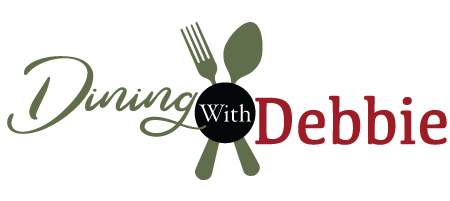On this week’s THV11 segment, Alyse and I discussed some pointers for staging a basic Cheese Board for your upcoming holiday gatherings. There is no definite way to create a cheese plate/tray/platter/board. It should reflect your tastes and the event or meal it is accompanying and should be something you and your guests will enjoy and remember. A cheese plate doesn’t have to be formal, but it should be fun and interesting. Make it pleasing to your taste buds and your eyes. Mostly, relax and enjoy it. Preparing a good cheese board isn’t about the cooking, it’s about the choosing.
Choosing:
- Most cheeses fall into one of these four categories: firm, aged, blue and soft (FABS). Try to include different flavors and textures by choosing one cheese from each category. Some suggestions:
- Firm: Parmigiano-Reggiano, Manchego, Parmesan, Mimolette
- Aged: Aged Cheddar, Gouda, Comte
- Blue: Stilton, Gorgonzola, Roquefort
- Soft: Camembert, Zimbro (try it!), Goat Cheese
- Choose cheeses that are made from different types of milk goat, sheep and cow.
- Spend a little more when you’re creating a holiday or special cheese platter. You want to serve specialty cheeses that you don’t eat regularly. Check the cheese counter for odds and ends you can use without having to purchase large amounts.
SERVINGS:
- Plan on 1 to 2 ounces of each cheese per person if serving as an hors d’oeurve/appetizer
- Plan on 3 to 4 ounces of each cheese per person if serving as the main offering.
ARRANGING: (suggested)
- Think clockwise, softer to harder. (Chevre, Triple Cream/Brie, Manchego, Gouda, Blue)
- Separate strong cheeses from more mild ones, you don’t want cheeses to start tasting like each other.
- Do not crowd the platter. Give each element its own space.
TIPS:
- Do not hesitate to find yourself a reliable cheese monger. Not all cheese mongers and cheese shops are created equal! Does the cheese monger let you taste the cheese before you buy? Is the cheese shop busy; does the cheese inventory change frequently? Is the cheese pre-wrapped, or is it cut to order for you? You need the answers to these questions before purchasing and any good cheese monger will be happy to assist with the answers. Good cheese isn’t cheap, but good cheese is worth it. Depending on method of production, country of origin, and scarcity it will cost you anywhere between $9 and $30 per pound
- Pick your cheeses. Ask your cheese monger for suggestions if you have no idea where to start. Get a variety of different types of cheeses (typically around 4, preferably an odd number). You should have at least one familiar type of cheese, such as Brie or aged cheddar. Pick one each from the following categories:
- Aged Cheeses: Aged cheddar, goat Gouda, Swiss, etc.
- Soft Cheeses: Brie, Camembert, Constant Bliss, etc.
- Firm Cheeses: Gruyere, Jarlsberg, Monterey Jack, Provolone, etc.
- Blue Cheeses: Stilton, Gorgonzola, etc.
- Alternatively, pick one cheese from each type of milk – goat, sheep, and cow – so that several different flavors are present on your platter.
- Add accompaniments. Some foods can heighten and even change the flavor of cheese. Serve with a variety of accompaniments such as smoked/toasted nuts, quince paste, slices of pear or apple, figs, grapes, dried fruits, fig jam, apple butter, olives, etc. Personally, I avoid honey because of the difficulty in serving it without creating a mess.
- I prefer to cut my cheeses before serving. While blocks of cheese make for pretty displays, they also make for serving difficulty. If you desire, compromise by leaving some of the cheese whole while slicing or chunking additional parts.
- Unless the cheese tray is preceding a meal or is being served as a dessert, I like to add smoked meats – smoked sausage, shaved hickory-smoked ham, pancetta, sopresetta etc.
- You will want to have a variety of specialty crackers or breads, perhaps even some sweet nut breads alongside baguette slices and bread sticks. Suggestions:
- Flavored or peppered crackers with mild cheeses. The cheese will enhance the flavor in the cracker.
- Seedy crackers with cheeses such as goat’s cheese.
- Baguette slices pair well with soft cheese such as brie.
I hope these guidelines will encourage you to branch out with your cheese selections. Start simply and enjoy the process.




Thanks for this very valuable post, Debbie!
Regarding honey, when it is mixed with butter it is not very messy and I’m thinking it would be marvelous with a smoky meat and a mellow Swiss, maybe on a peppered cracker, or hearty bread. What do you think?
It might work:)
Great information and beautiful presentation. Thanks for the tips. I will probably put some of them to use during the holidays.
Hope they come in handy:) Thanks for stopping by.